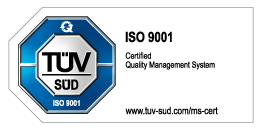Express Train Passenger Car Set.
Prototype: 6 different German Federal Railroad (DB) express train passenger cars as the train composition D 265 Basle - via Wuppertal - Hagen in Era III. 1 type D4üm-60 passenger train baggage car, 1 type A4üm coach, 1st class, 1 type AB4üm coach, 1st/2nd class, 2 type B4üm coaches, 2nd class, and 1 type WR4ü dining car.
Most Important Facts
| Article No. | 15444 |
|---|---|
| Gauge / Design type | Minitrix / |
| Era | III |
| Kind | Passenger Car Sets |
Check with your local dealer Now available via speciality dealer. This exclusive article is not available in our online shop, instead you can purchased them from specific retailers. Please contact your local retailer. Find Dealer
-
Product description
Model: All of the cars have close coupler mechanisms. Interior lighting can be installed in the cars. The cars come individually packaged and marked. Total length over the buffers 972 mm / 38-1/4".
66656 Lighting kit for the coaches. 66708 Lighting kit for the dining car.
The express locomotive to go with these cars is being produced under item no. 12333, also exclusively for Trix Profi Club members.
Spare parts for our articles can be found here in our spare parts search.
This car set is being produced in 2010 in a one-time series only for Trix Profi Club members.
-
Publications
- New Items 2010 - Main Catalog 2010/2011
-
Prototype information
The development of passenger car construction almost completely interrupted by World War II and its effects in Germany, and passenger car development did not start up again until the end of the Forties with the planning and construction of 16 test cars. While the first of these test cars borrowed heavily in terms of design and basic form from the prewar designs, Wegmann of Kassel placed into service three new, 26.4 meter / 86 foot 7-5/16 inch long fast train coaches with center entrance doors. The basic design and the essential features of the technical equipment for these cars were largely adopted unchanged for the different series of around 750 such fast train coaches. They also formed par excellence the starting point for the postwar development in German passenger car construction that even developed into the UIC standard (UIC = Union Internationale des Chemins de fer = International Railroad Association). The new development in the construction of passenger cars was characterized primarily by the lengthening of the cars to a standard length of 26.4 meters / 86 feet 7-5/16 inches for all the car types. All of the new passenger cars were equipped with the Minden-Deutz design trucks with coil springs. The long, standard design length of the car also added to the design advantages of the trucks. This length resulted from the unusual pivot point distance of 19 meters / 62 feet 4 inches. Typical of the DB's 26.4 meter / 86 foot 7-5/16 inch long cars were the excellent running characteristics for the majority of the seats in the cars. This was achieved with simple running gear and was maintained over long periods of operation. In addition to the greater seat width, a claim could be made in general for a considerable increase in travel comfort in both car classes for long distance service. This was achieved with better lighting with fluorescent lamps, upholstered seats that could be pulled out for lying on, adjustable head cushions, reading lamps, additional rest rooms, as well as practical interior fittings that made it possible to keep the car interiors cleaner. The car bodies for all of the 26.4 meter / 86 foot 7-5/16 inch cars looked pretty much alike and were welded using lightweight rolled side sills so that the outer skin of the cars was an integral part of the load-bearing elements. After the first prototypes were also delivered for long distance service, regular production began in 1952 for different types of the new express train passenger cars. New UIC rules regarding rigidity required a modification of the car body from 1960 on so that the area of the car ends was made more collision resistant. This in turn necessitated a modified frame design. Instead of the previous four-part folding doors on the car ends, a two-part sliding door design that could be opened by hand was installed. The following quantities of the basic designs were purchased by the DB: 344 compartment cars, 1st class (A4üm), 718 compartment cars, 1st/2nd class (AB4üm), 3,180 compartment cars, 2nd class (B4üm), 182 baggage cars (D4üm), and 301 combined baggage and compartment cars, 2nd class (BD4üm). The 26.4 meter / 86 foot 7-5/16 inch cars garnered additional honors at the start of the first class Intercity network in 1971 and the expansion of the IC to include second class cars in 1979. There the use of these cars did not end until 2005.




